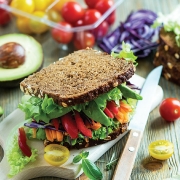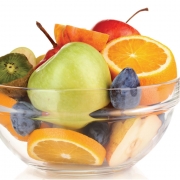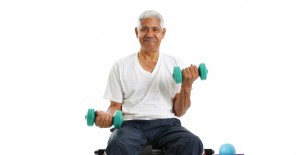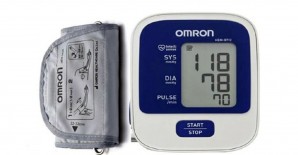
Health
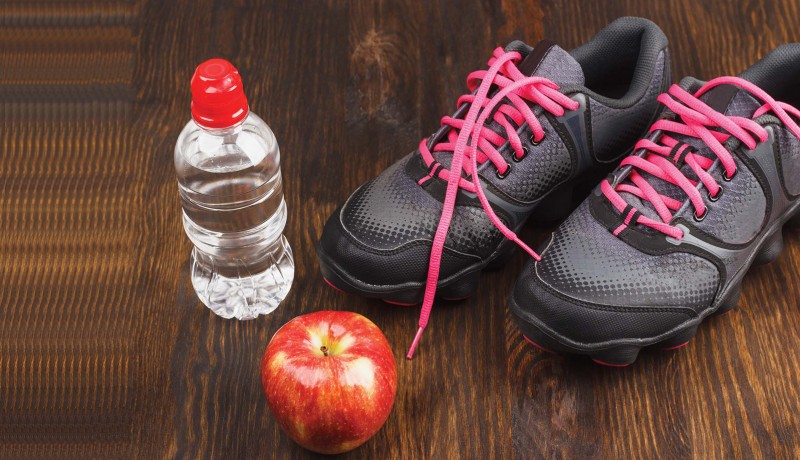
Dietary dos and don’ts by wellness consultant Naini Setalvad
Running was probably the first ‘sport’ in which we participated unintentionally. After we take our first steps, we soon start to run, putting one foot in front of the other and picking up pace. When life eventually takes over, most people slow back down. But for some, the practice sticks—they choose to train regularly and set themselves new goals and benchmarks. Some even choose to take part in marathons!
If you think marathons are just for young runners, think again. With the increasing focus on active ageing and fitness, many silvers are discovering the joy of running later in life. And those who have been running all their lives see it as a natural extension of their passion. That said, silver runners need to factor in age-related limitations when they plan and train for such gruelling events.
Responsible eating is always crucial, and never more than when you are planning to run a marathon. A well-planned diet plan that begins six months (or at least a minimum of three months) prior to the event is ideal. The first step is to stay hydrated through the day, have three small meals, and snack responsibly. Throughout your training, it is good to eat a balance of good-quality fat, protein and grains with seasonal, local vegetables, and snack on fruits that give you sustained energy.
There is a fair bit of confusion over dietary dos and don’ts before, after and during the marathon. Some suggest a high-protein diet while others recommend a carbohydrate-rich meal. The key is to not follow any fad diets but balance all the nutrients and increase the quantity according to activity levels.
By adding herbs and spices, you can reduce stress and inflammation; this will help you breathe better. Add ginger, garlic, turmeric and tulsi (holy basil) in your diet. Include lots of vegetables in every meal and a moderate amount of protein and grain. Choose grains like whole wheat, rajgira (amaranth), jowar (sorghum), ragi (finger millet), unpolished rice, potato, sweet potato and whole-grain bread. Make sure you include omega 3 as it reduces inflammation, muscle soreness and the free radical damage done from training. Also cook your food in mustard oil or cow’s ghee.
MEAL PLAN FOR REST DAY
- Breakfast: 1-egg omelette and toast or paneer on toast tossed in vegetables with ginger, a pinch each of turmeric powder and rock salt + probiotic drink
- Mid-morning: 1 fruit + coconut water
- Lunch: A bowl of pulses + sautéed vegetables and roti or rice
- Evening: A handful of walnuts
- Dinner: A bowl of vegetable salad + vegetable soup + cooked vegetable + 2-3 rotis or 1 bowl of rice
MEAL PLAN FOR NORMAL TRAINING DAY
- Breakfast: 1 vegetable uttapam (plate size) and coconut chutney or 1 whole egg + 2 whole-grain vegetable sandwiches or 1 vegetable paratha (plate size) with raita with vegetables
- Mid-morning: 1 fruit + coconut water
- Lunch: A bowl of pulses + sautéed vegetables + roti or rice
- Evening snack: A handful of walnuts
- Dinner: A bowl of vegetable salad + vegetable soup + cooked vegetables + 1 bowl of brown rice + 100 gm fish/chicken/paneer
MEAL PLAN FOR HEAVY TRAINING DAY
- Breakfast: 1 vegetable uttapam (plate size) and coconut chutney or 1 whole egg + 2 whole-grain vegetable sandwiches or 1 vegetable paratha (plate size) with yoghurt + a handful of almonds + probiotic drink
- Mid-morning: 1 fruit + coconut water with cream
- Lunch: A bowl of pulses + sautéed vegetables + roti or rice
- Evening snack: A handful of walnuts
- Dinner: A bowl of vegetable salad + vegetable soup + cooked vegetables + 1 bowl of brown rice + 100 gm fish/chicken/paneer
ON THE EVE OF THE MARATHON
Switch to a high-carbohydrate diet three days before the marathon to maximise your body’s glycogen stores to prepare it for distance running and build endurance.
- Research shows that carbohydrates turn into much-needed glycogen more efficiently when accompanied with the consumption of water.
- Carbohydrates like unpolished rice, whole-wheat bread, rotis made of wheat, bajra and jowar or whole-wheat pastas are ideal.
- Have an early night and get good restful sleep.
- Avoid caffeine and alcohol. They are like diuretics and lead to dehydration.
- Limit intake of fruits, vegetables and proteins. Avoid too many salads as the roughage may cause stomach irritation on the day of the marathon.
- Avoid foods high in salt, processed foods and fast foods, like burgers, pizzas and French fries.
- Avoid sugary foods like mithai, chocolates, sherbets, cakes and jelly. These add empty calories to the body.
- Avoid greasy food at all times—before, during and after the marathon.
MEAL PLAN FOR MARATHON EVE
- Breakfast: Plenty of fruits (apple, banana, orange) + coconut water
- Mid-morning: Vegetable rava upma made in ghee or vegetable rava uttapam or whole-grain vegetable sandwich + probiotic drink
- Lunch: Vegetables + roti made of rajgira/ragi/jowar + 1 cup of dal
- Evening: Dry figs, dates and pineapples
- Dinner: Mixed veggies (add pumpkin) with rotis
- Breakfast: Rava sheera with raisins and grated coconut + probiotic drink
THINGS TO DO BEFORE AND DURING THE MARATHON
- Drink water up to 15 minutes before the start of the marathon.
- Eat a carbohydrate snack with a high glycaemic index for energy.
- Avoid soft drinks, fruit juices and sweets before running the marathon as they will only give you an initial sugar rush with a quick and sudden drop of energy which is fatal.
- During the race, water is the mainstay as it regulates body temperature, lubricates joints, prevents cramps and transports essential nutrients to various parts of the body.
- Drink plenty of fluids. Coconut water is a good choice to have before the race as it is a natural electrolyte.
THINGS TO DO AFTER THE MARATHON
- Ensure you take complete rest for three days with no exercise whatsoever, except light stretches or yogic stretches.
- Drink plenty of water.
- Bathe with sea salt; it soothes the body and takes away the aches and pains.
- Use ice packs to reduce stiffness on sore muscles.
- Have plenty of fruits and vegetables to increase glycogen stores.
- Resume your workout after the third day; each week, you can add an extra 15 minutes to the workout. Restarting high-intensity workouts and long runs will not allow your body to recover.
- Get back to a well-balanced eating plan and exercise schedule.
RECIPES FOR RUNNERS!
PANEER BHURJI
Ingredients
- Paneer: 200 gm
- Tomato: 1 large; chopped
- Capsicum: half; chopped
- Onion: 1; chopped
- Red chilli powder: ½ tsp
- Turmeric powder: ¼ tsp
- Salt to taste
- Cow’s ghee
Method
Curdle milk to make crumbled paneer at home. Heat ghee in a pan and sauté the onion, capsicum and tomato in it. Then add the spices and sauté for a while. Add the crumbled paneer. Sauté for a while and serve hot.
SINDHI KADI
Ingredients
- Tuvar/toor dal: 1 cup
- Cluster beans: 200 gm; chopped long
- Okra (lady’s finger): 200 gm; slit and chopped into 2-inch pieces
- Bengal gram flour: 75 gm
- Tamarind pulp: 100 ml
- Red chilli powder: 1½ tsp
- Turmeric powder: ½ tsp
- Mustard seeds: 1 tsp
- Cumin seeds: 1 tsp
- Fenugreek seeds: 1 tsp
- Green chillies: 2
- Ginger: 1 tsp; grated
- Curry leaves: 5 to 6
- Coriander and mint leaves: 1 tbsp; chopped
- Ghee: 1 tbsp
- Salt to taste
Method
Pressure-cook the dal and set aside. Steam the beans and keep aside. Heat ghee in a kadhai and add fenugreek, cumin and mustard seeds. As it starts crackling, add curry leaves, green chillies, ginger, red chilli and turmeric powders. Add gram flour and roast for 5 minutes till it turns golden. Add dal and cook for another 10 minutes. Add half a litre of water and let it cook for 5 minutes. Add the raw okra and cook for another 5 minutes. Add salt, tamarind pulp and steamed beans. Add coriander and mint leaves. Let it cook well for 5-10 minutes. Serve hot with steamed rice.
STUFFED BAJRA ROTI
Ingredients
For the dough
- Bajra flour: 2 teacups
- Salt to taste
For the stuffing
- Fenugreek leaves: 6 tbsp; chopped
- Green chilli: 1; chopped
- Tomato: 1 large; finely chopped
- Salt to taste
Method
Mix the bajra flour, salt and enough hot water to make soft dough. Knead well, divide into 16 portions and roll out each portion into thin rotis. Mix all the ingredients for stuffing and keep aside. To proceed, spread a little stuffing on one roti. Then put another roti on top and press well to make it stick to the roti beneath. Repeat for the remaining rotis. Cook the stuffed rotis on a tawa on both sides, adding a little butter. Serve hot.
PUMPKIN RAITA
Ingredients
- Pumpkin: 150 gm; boiled
- Low-fat yoghurt: 300 gm
- Cumin powder: ¼ tsp
- Green chilli: 1; finely chopped
- Salt to taste
Method
Mash the boiled pumpkin and add to the yoghurt. Add salt, green chilli and cumin powder. Mix well and serve chilled.
Setalvad is an obesity and lifestyle disease consultant who offers diet counselling at Health for You, a wellness clinic in Mumbai, as well as online. Visit www.nainisetalvad.com for more details or write to contact.us@harmonyindia.org if you have any queries for her
Photos: 123RF.com Featured in Harmony — Celebrate Age Magazine November 2017
you may also like to read
-
Hot tea!
If you enjoy sipping on that steaming hot cup of tea, think twice. New research establishes a link between drinking….
-
Weight and watch
If you have stayed away from lifting weights at the gym, thinking it might not be a good idea for….
-
Toothy truth
Research has established a clear association between cognitive function and tooth loss when cognitive function score was categorised into quintiles…..
-
PRODUCT OF THE MONTH
Automatic Blood Pressure Monitor Measure your blood pressure and pulse rate with no fuss Hypertension, or high blood pressure, could….



